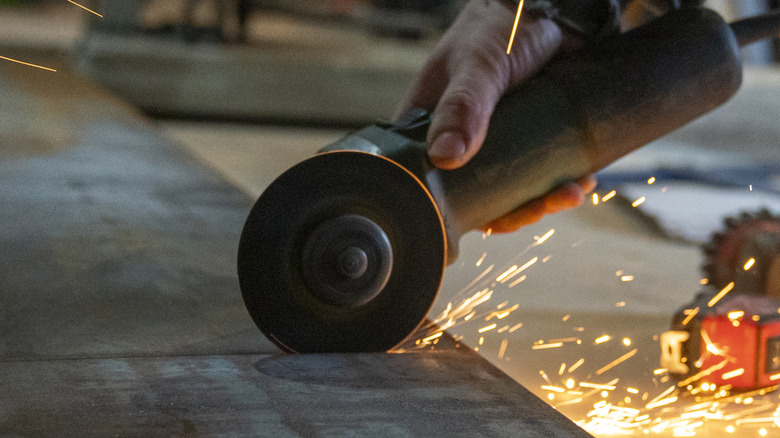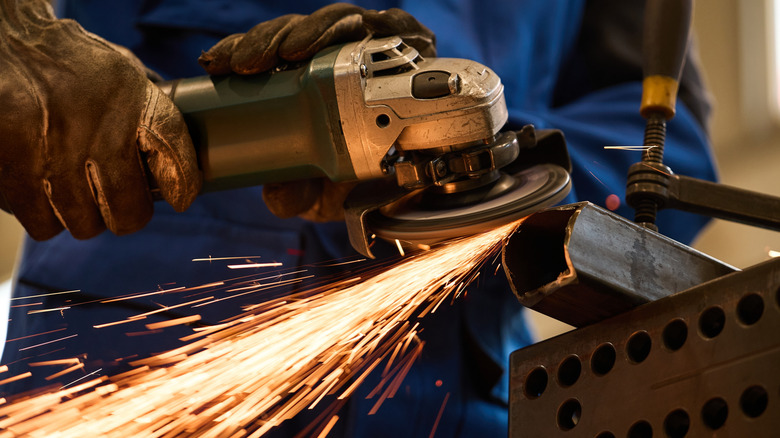How To Reduce Sparking When Cutting With An Angle Grinder
When speaking of versatile power tools worth having around a workshop, the angle grinder undoubtedly deserves a place among them. This tool is excellent for cutting, sanding, and polishing various materials, with different disc attachments allowing it to meet the needs of specific jobs. However, the angle grinder has a reputation for being one of the most nerve-wracking tools for even pros to use. While its noise level and power may be a bit much for some users to contend with, there's also the sparking, which is a common sight when using this tool on metal, something that can give novice users a scare.
Unfortunately, it's impossible to fully prevent sparking when using an angle grinder on metal. The high speed of the grinder and friction against the material are guaranteed to generate and ignite small bits of heated metal. At the same time, you can minimize the amount of sparking your grinding efforts create. The biggest thing to do is to put less pressure on the grinder as you cut. Increased pressure increases friction and, therefore, sparking. You can try the tape trick, where you wrap a few layers of tape around your material, mark it so that you cut to the correct length, and cut. The tape acts as an intermediary between the blade and the material, reducing friction and the resulting sparking. Using reduced sparking blades is also a good idea. Since sparks are virtually impossible to remove from angle grinder use completely, it's good to know as much as you can about them. More specifically, it's key to understand spark safety to keep yourself out of harm's way.
The safety of angle grinder sparking
To an observer, angle grinder sparks may not seem all that dangerous. In reality, as hot shards of metal or other materials, they can become quite dangerous when flying around. That's why safety while using an angle grinder is incredibly important for the one using the tool and those in the vicinity. For one, you want to wear the right equipment to keep yourself protected. This includes heavy-duty gloves, safety glasses, a full face shield or at least a respirator, and a protective jumpsuit or apron. After all, the last thing you want is to breathe in hazardous materials or be burned by them as they fly through the air at high speeds and higher temperatures.
Of course, personal protection is only the tip of the iceberg. As for the angle grinder itself, it should be used in such a way that the sparks it releases are angled away from you, reducing the likelihood of burns. The protective guard should also be used for the purpose of guiding the sparks away. One would be remiss not to mention that the environment in which the angle grinder is used should be taken care of as well. Cutting should be done only away from potentially flammable materials, since there's a strong possibility the sparks will cause them to catch fire. Ensure there's no grain dust or similar kindling present, as this stuff is a prime gateway to a larger fire. There are several types of power grinders out there, though none kick up sparks quite like an angle grinder. That's why it's crucial to know how to reduce the likelihood of their creation and simultaneously keep yourself and your environment safe from all the havoc they could cause.

